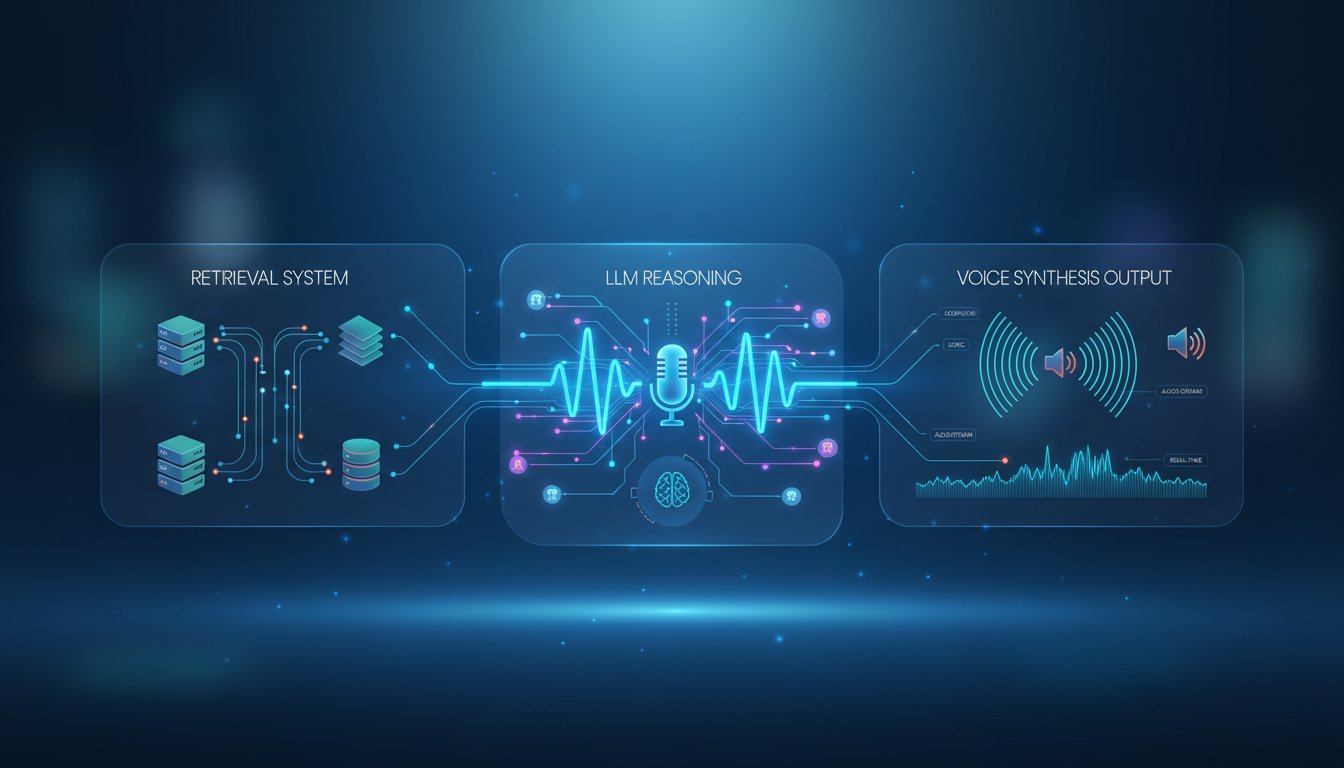Enterprise AI systems fail. It’s not a question of if, but when. Last month, a Fortune 500 company’s RAG system went down during a critical board presentation, leaving executives staring at error messages instead of AI-generated insights. The culprit? A single point of failure in their vector database that brought down their entire knowledge retrieval pipeline.
This scenario plays out daily across enterprises worldwide. As organizations increasingly rely on RAG systems for mission-critical operations—from customer support to regulatory compliance—the need for fault-tolerant architectures has never been more urgent. Yet most implementations treat reliability as an afterthought, building systems that crumble under real-world pressure.
The solution isn’t just backup systems or redundant infrastructure. It’s architecting fault tolerance from the ground up, implementing intelligent failover mechanisms, and building recovery systems that learn from failures. This comprehensive guide will walk you through building enterprise-grade RAG systems that don’t just survive failures—they adapt and improve from them.
By the end of this implementation guide, you’ll have a blueprint for RAG systems that maintain 99.9% uptime, automatically route around failures, and provide consistent performance even when individual components fail. We’ll cover everything from distributed vector databases to circuit breaker patterns, with real code examples and production-tested configurations.
Understanding Fault Tolerance in RAG Architectures
Fault tolerance in RAG systems goes beyond traditional web application patterns. Unlike stateless APIs, RAG systems maintain complex state across multiple components: vector databases, embedding models, language models, and retrieval pipelines. Each component represents a potential failure point that can cascade through the entire system.
The Anatomy of RAG Failures
Based on production incident reports from major enterprises, RAG failures typically fall into five categories:
Vector Database Failures (45% of incidents): Connection timeouts, index corruption, memory exhaustion, and scaling bottlenecks. These failures often result in complete retrieval pipeline breakdown.
Model Service Failures (28% of incidents): API rate limits, model server crashes, embedding service timeouts, and GPU memory errors. These create silent degradation where the system appears functional but returns poor results.
Network Partitions (15% of incidents): Service mesh failures, DNS resolution issues, and inter-service communication breakdowns. These create inconsistent behavior across system components.
Data Pipeline Failures (8% of incidents): Document ingestion errors, preprocessing failures, and metadata corruption. These result in stale or incomplete knowledge bases.
Configuration Drift (4% of incidents): Parameter mismatches, version incompatibilities, and deployment inconsistencies. These create subtle but persistent performance degradation.
Building Resilient System Architecture
Enterprise fault tolerance requires architectural patterns that anticipate these failure modes. The foundation starts with distributed design principles adapted for RAG-specific challenges.
Distributed Vector Storage: Implement sharded vector databases with automatic replication across availability zones. This prevents single-point failures while maintaining query performance.
Model Service Mesh: Deploy multiple embedding and generation models behind load balancers with health checks and automatic failover. This ensures consistent service availability even during model server maintenance.
Circuit Breaker Implementation: Implement intelligent circuit breakers that detect degraded performance and route traffic to healthy components. This prevents cascade failures from overwhelming the entire system.
Implementing Multi-Tier Failover Strategies
Effective failover in RAG systems requires multiple layers of redundancy, each designed to handle different failure scenarios. The key is building graceful degradation that maintains service quality even with reduced functionality.
Primary Tier: High-Performance Operations
The primary tier handles normal operations with full functionality and optimal performance. This includes your primary vector database cluster, latest model versions, and complete retrieval pipelines.
class PrimaryRAGService:
def __init__(self):
self.vector_db = PrimaryVectorDB()
self.embedding_model = LatestEmbeddingModel()
self.llm = PrimaryLLMService()
self.circuit_breaker = CircuitBreaker(failure_threshold=5)
def query(self, user_query):
try:
with self.circuit_breaker:
embeddings = self.embedding_model.embed(user_query)
docs = self.vector_db.similarity_search(embeddings)
return self.llm.generate(user_query, docs)
except ServiceFailure as e:
raise FailoverRequired("Primary service degraded")
Secondary Tier: Reduced Functionality
The secondary tier activates when primary components fail, offering reduced but functional service. This might include simplified retrieval algorithms, cached responses, or alternative model endpoints.
class SecondaryRAGService:
def __init__(self):
self.vector_db = SecondaryVectorDB() # Read replicas
self.embedding_model = BackupEmbeddingModel()
self.llm = BackupLLMService()
self.response_cache = RedisCache()
def query(self, user_query):
# Try cached responses first
cached_response = self.response_cache.get(user_query)
if cached_response:
return cached_response
# Fallback to simplified retrieval
embeddings = self.embedding_model.embed(user_query)
docs = self.vector_db.basic_search(embeddings, limit=5)
response = self.llm.generate(user_query, docs)
# Cache successful responses
self.response_cache.set(user_query, response, ttl=3600)
return response
Tertiary Tier: Basic Functionality
The tertiary tier provides minimal but functional service using pre-computed responses, keyword search, or simplified rule-based systems. This ensures users always receive some form of response, even during major system failures.
Health Check Implementation
Implement comprehensive health checks that monitor system components and trigger failover decisions:
class HealthChecker:
def __init__(self):
self.checks = {
'vector_db': self.check_vector_db,
'embedding_service': self.check_embedding_service,
'llm_service': self.check_llm_service,
'network': self.check_network_connectivity
}
def check_system_health(self):
health_status = {}
for component, check_func in self.checks.items():
try:
health_status[component] = check_func()
except Exception as e:
health_status[component] = {'status': 'unhealthy', 'error': str(e)}
return self.determine_service_tier(health_status)
def determine_service_tier(self, health_status):
critical_failures = sum(1 for status in health_status.values()
if status.get('status') == 'unhealthy')
if critical_failures == 0:
return 'primary'
elif critical_failures <= 2:
return 'secondary'
else:
return 'tertiary'
Advanced Recovery Mechanisms
Fault tolerance extends beyond failover to include intelligent recovery mechanisms that restore full functionality and learn from failures.
Automatic Service Recovery
Implement self-healing mechanisms that attempt to restore failed components automatically:
class AutoRecoveryManager:
def __init__(self):
self.recovery_strategies = {
'vector_db': self.recover_vector_db,
'model_service': self.recover_model_service,
'network': self.recover_network
}
self.max_recovery_attempts = 3
self.backoff_strategy = ExponentialBackoff()
def attempt_recovery(self, failed_component):
strategy = self.recovery_strategies.get(failed_component)
if not strategy:
return False
for attempt in range(self.max_recovery_attempts):
try:
strategy()
if self.verify_component_health(failed_component):
return True
except RecoveryFailure:
self.backoff_strategy.wait(attempt)
return False
def recover_vector_db(self):
# Attempt index rebuild, connection reset, or failover
self.vector_db.reset_connections()
self.vector_db.validate_index_integrity()
def recover_model_service(self):
# Restart model containers, clear GPU memory, or switch endpoints
self.model_service.restart_containers()
self.model_service.clear_gpu_memory()
Failure Pattern Learning
Implement machine learning algorithms that analyze failure patterns and proactively prevent similar issues:
class FailurePatternAnalyzer:
def __init__(self):
self.failure_history = []
self.pattern_detector = AnomalyDetector()
self.prediction_model = FailurePredictionModel()
def record_failure(self, failure_event):
enriched_event = {
'timestamp': failure_event['timestamp'],
'component': failure_event['component'],
'error_type': failure_event['error_type'],
'system_metrics': self.collect_system_metrics(),
'recent_changes': self.get_recent_deployments()
}
self.failure_history.append(enriched_event)
self.update_prediction_model()
def predict_failures(self, time_window='1h'):
current_metrics = self.collect_system_metrics()
risk_scores = self.prediction_model.predict_risk(current_metrics)
high_risk_components = [
component for component, score in risk_scores.items()
if score > 0.7
]
return high_risk_components
def recommend_preventive_actions(self, at_risk_components):
recommendations = []
for component in at_risk_components:
historical_failures = self.get_component_failures(component)
common_causes = self.analyze_failure_causes(historical_failures)
recommendations.extend(self.generate_preventive_actions(common_causes))
return recommendations
Performance Monitoring and Alerting
Effective fault tolerance requires comprehensive monitoring that detects degradation before it becomes failure. Implement multi-dimensional monitoring that tracks both technical metrics and business outcomes.
Real-Time Performance Metrics
Monitor key performance indicators across all system components:
class RAGPerformanceMonitor:
def __init__(self):
self.metrics_collector = MetricsCollector()
self.alert_manager = AlertManager()
self.thresholds = {
'query_latency': 2.0, # seconds
'retrieval_accuracy': 0.85, # minimum accuracy
'availability': 0.999, # 99.9% uptime
'error_rate': 0.01 # 1% maximum error rate
}
def collect_metrics(self):
return {
'query_latency': self.measure_query_latency(),
'retrieval_accuracy': self.measure_retrieval_accuracy(),
'availability': self.calculate_availability(),
'error_rate': self.calculate_error_rate(),
'resource_utilization': self.measure_resource_usage(),
'throughput': self.measure_throughput()
}
def check_thresholds(self, metrics):
violations = []
for metric, value in metrics.items():
threshold = self.thresholds.get(metric)
if threshold and self.is_threshold_violated(metric, value, threshold):
violations.append({
'metric': metric,
'value': value,
'threshold': threshold,
'severity': self.calculate_severity(metric, value, threshold)
})
return violations
def trigger_alerts(self, violations):
for violation in violations:
if violation['severity'] == 'critical':
self.alert_manager.send_immediate_alert(violation)
elif violation['severity'] == 'warning':
self.alert_manager.send_warning_alert(violation)
Predictive Alerting
Implement predictive alerting that warns of potential issues before they impact users:
class PredictiveAlerting:
def __init__(self):
self.trend_analyzer = TrendAnalyzer()
self.capacity_planner = CapacityPlanner()
self.anomaly_detector = AnomalyDetector()
def analyze_trends(self, metrics_history):
trends = self.trend_analyzer.analyze(metrics_history)
predictions = {
'capacity_exhaustion': self.predict_capacity_issues(trends),
'performance_degradation': self.predict_performance_issues(trends),
'failure_probability': self.predict_failure_probability(trends)
}
return predictions
def predict_capacity_issues(self, trends):
resource_trends = trends['resource_utilization']
time_to_exhaustion = self.capacity_planner.calculate_exhaustion_time(resource_trends)
if time_to_exhaustion < timedelta(hours=24):
return {
'alert': 'capacity_warning',
'time_remaining': time_to_exhaustion,
'recommended_actions': ['scale_up_resources', 'optimize_queries']
}
return None
Production Deployment Strategies
Deploying fault-tolerant RAG systems requires careful orchestration of multiple components across distributed infrastructure. The key is implementing zero-downtime deployments with automatic rollback capabilities.
Blue-Green Deployment for RAG Systems
Implement blue-green deployments adapted for RAG-specific challenges like vector database synchronization and model consistency:
class RAGBlueGreenDeployment:
def __init__(self):
self.environment_manager = EnvironmentManager()
self.traffic_router = TrafficRouter()
self.health_validator = HealthValidator()
def deploy_new_version(self, new_config):
# Prepare green environment
green_env = self.environment_manager.create_environment('green')
try:
# Deploy new components
self.deploy_vector_database(green_env, new_config)
self.deploy_model_services(green_env, new_config)
self.sync_knowledge_base(green_env)
# Validate deployment
if self.validate_green_environment(green_env):
self.switch_traffic_to_green()
self.cleanup_blue_environment()
return {'status': 'success', 'environment': 'green'}
else:
raise DeploymentValidationError("Green environment validation failed")
except Exception as e:
self.rollback_deployment()
raise DeploymentError(f"Deployment failed: {e}")
def validate_green_environment(self, green_env):
validation_tests = [
self.test_query_accuracy,
self.test_response_latency,
self.test_system_integration,
self.test_load_capacity
]
for test in validation_tests:
if not test(green_env):
return False
return True
Canary Releases with A/B Testing
Implement intelligent canary releases that gradually shift traffic while monitoring quality metrics:
class CanaryReleaseManager:
def __init__(self):
self.traffic_splitter = TrafficSplitter()
self.quality_monitor = QualityMonitor()
self.rollback_trigger = RollbackTrigger()
def start_canary_release(self, canary_config):
canary_stages = [
{'traffic_percentage': 5, 'duration': 300}, # 5% for 5 minutes
{'traffic_percentage': 25, 'duration': 600}, # 25% for 10 minutes
{'traffic_percentage': 50, 'duration': 900}, # 50% for 15 minutes
{'traffic_percentage': 100, 'duration': 0} # Full rollout
]
for stage in canary_stages:
self.execute_canary_stage(stage, canary_config)
if self.should_rollback():
self.rollback_canary()
return {'status': 'rolled_back', 'reason': 'quality_degradation'}
return {'status': 'success', 'deployment': 'complete'}
def execute_canary_stage(self, stage, config):
self.traffic_splitter.set_canary_percentage(stage['traffic_percentage'])
# Monitor during stage
start_time = time.time()
while time.time() - start_time < stage['duration']:
metrics = self.quality_monitor.collect_canary_metrics()
if self.detect_quality_regression(metrics):
self.rollback_trigger.activate("Quality regression detected")
break
time.sleep(30) # Check every 30 seconds
Building fault-tolerant RAG systems isn’t just about preventing failures—it’s about creating resilient architectures that maintain service quality under any conditions. The strategies outlined in this guide provide a comprehensive framework for enterprise-grade reliability, from multi-tier failover to predictive monitoring.
The key to success lies in treating fault tolerance as a core architectural principle, not an afterthought. By implementing these patterns, your RAG systems will not only survive failures but learn from them, becoming more robust with each incident. Start with the health checking and basic failover mechanisms, then gradually add advanced features like predictive alerting and automated recovery.
Ready to build RAG systems that never let you down? Our enterprise reliability toolkit includes production-tested code examples, monitoring dashboards, and deployment scripts that implement every pattern discussed in this guide. Download the complete implementation package and transform your RAG infrastructure from fragile to bulletproof in just 30 days.




